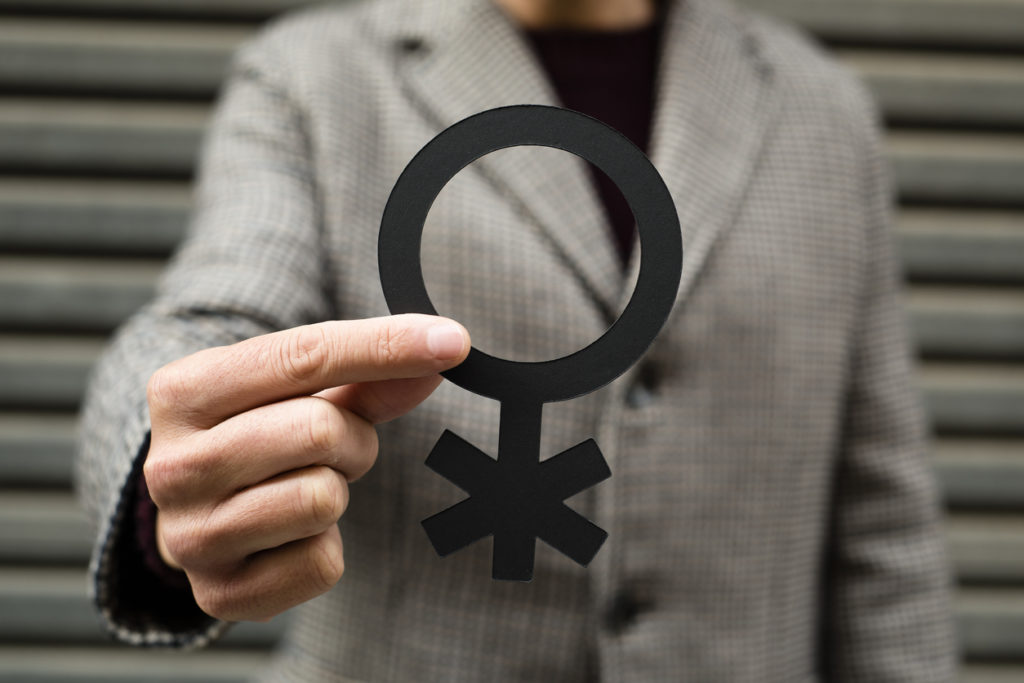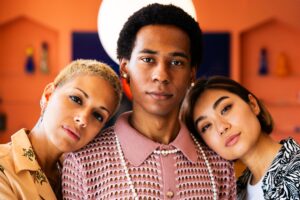July 14th is recognized as International Non-Binary People’s Day. It’s a day to celebrate the rich diversity of this often-overlooked community.
Since 2012, July 14th has been a special day for those who identify as non-binary. Designated as International Non-Binary People’s Day, the holiday promotes awareness and acceptance of those whose gender identity extends beyond the traditional masculine/feminine distinctions.
Keep reading to learn more about what non-binary means and the challenges this community faces. You’ll also learn how substance abuse treatment centers can better serve this group.
What Does Non-Binary Mean?
Non-binary, also known as enby or genderqueer, is an umbrella term for people whose gender identity doesn’t fit into the traditional male and female divisions.
They may identify as having two or more genders, having no gender, moving between genders, or being third gender. Some may identify with aspects of binary identities, while others may reject them completely.
They may present as masculine, feminine, or something entirely unique. And while their gender presentation (e.g. clothing, hairstyle) can change over time, that doesn’t make any of these identites less valid.
Is non-binary the same as trans?
No. The term trans refers to people whose gender does not fit into the sex they were assigned at birth. Some non-binary people don’t identify with their assigned sex, but some do.
That being said, within the transgender population, approximately 23%-36% identify as non-binary. In other words, there is some overlap between these identities.
What Challenges Do Non-Binary People Face?
Non-binary gender identities are nothing new. Indeed, many non-Western societies have a history of third genders. For example, there is the Hijra of India and the two-spirit Indigenous North Americans.
Even though these identities have been around for thousands of years, legislation and social acceptance have only just started to take shape. As a result, many non-binary people face challenges in their daily lives.
Lack of awareness and visibility
Despite nearly 3% of teens stating that they don’t identify with traditional gender labels such as “boy” or “girl,” the non-binary community is still largely invisible and misunderstood. In fact, prior to the 2018 study that put forth the 3% figure, many researchers believed the number to be less than 1%.
This lack of understanding contributes to non-binary people staying in the closet about their identity. Indeed, research shows that non-binary youth are about half as likely to be out compared to trans men and women. Researchers don’t know why, exactly but some think non-binary people fear their identity will be invalidated when coming out.
Getting accurate identity documents
Many non-binary people struggle to get IDs that align with their gender identity. This may seem like a small thing for some, but having an ID that doesn’t reflect your true identity is demoralizing and disrespectful.
As things stand now, more than half of U.S. states and foreign countries either have no options for revising official documents, require surgery, and/or provider consent to change documents, or have burdensome filing requirements.
While a lot still needs to be done, there has been some progress. For example, non-binary people in Canada now have the option to obtain a non-gendered birth certificate. In addition, countries like Australia, Denmark, Germany, and New Zealand offer non-binary gender options on passports. In the United States, people can mark ‘X’ for gender on their driver’s license in 20 states and in Washington D.C.
Poorer health
While there aren’t a lot of studies about non-binary people, initial findings suggest that this group reports significantly poorer health than cisgender respondents.
For example, a study of college students found that non-binary transgender individuals reported higher rates of harassment, sexual abuse, and exposure to traumatic events than binary transgender people.
Another study of 150 trans-masculine individuals found that those with a non-binary gender identity had higher odds of clinically significant depression and anxiety.
Many factors explain these findings. Non-binary people, like other members of the LGBTQ community, experience minority stress. And studies show that significant minority stress can lead to worsening psychological health.
This group also has poorer outcomes due to the lack of access to culturally competent treatment and/or providers. Studies show that people in this group may avoid seeking routine medical care as a result of prior negative medical experiences.
They may also hide relevant medical information for fear of judgment about their gender identity. These omissions could lead to a lower quality of care.
Substance Abuse In The Non-Binary Community
As with research about the health of non-binary individuals, not much is known about the relationship between gender identity and substance abuse. A lot of what is known about this community comes from studies of transgender respondents.
It’s important to note that some of these participants identify as non-binary, but not all. With that caveat in mind, initial findings suggest similarities between transgender and non-binary respondents when it comes to substance abuse.
One study found a link between non-binary gender identity and higher rates of recent substance use when compared to binary transgender individuals.
Another study found higher rates of hazardous drinking in non-binary participants than in binary participants.

How To Improve Substance Abuse Treatment For Non-Binary People
Although non-binary and transgender individuals are different in many ways, strategies for improving substance abuse treatment are quite similar for both groups.
First and foremost, addiction treatment centers need to provide culturally competent, affirmative care. On the most basic level, this means creating a welcoming environment where non-binary clients feel comfortable expressing themselves.
To that end, treatment centers should…
- Establish sound recruitment and hiring policies to build a culturally competent workforce
- Train staff to introduce themselves using their name and pronouns
- Provide cultural competency training for all clinical and non-clinical staff
- Ask for patients’ names and pronouns on a regular basis
- Provide a fill-in-the-blank option for gender on intake forms
- Adopt and implement written non-discrimination policies related to gender identity
- Avoid gender-specific language whenever possible (e.g. ‘folks’ instead of ‘ladies and gentlemen’)
- Offer ‘All gender’ restrooms. If that’s not possible, allow clients to use the restrooms that best correspond to their gender identity
- Assess and reconsider the physical environment, including images in posters and pamphlets in the treatment center. Make an effort to show people with diverse gender identities
- Be honest about your mistake if you misgender a client, but don’t make a big deal of it. Apologize, correct yourself, and move on
- Be open to learning from clients
During treatment, providers should…
- Help non-binary clients explore their identities
- Provide non-medical and medical strategies for gender affirmation
- Arrange suitable referrals to additional care providers if needed
- Address internalized stigma
- Assist clients with improving their body image
- Normalize the adverse impact of minority stress
- Facilitate emotional awareness, regulation, and acceptance
- Empower assertive communication
- Validate the unique strengths of gender non-conforming people
- Affirm healthy, rewarding expressions of gender
La Fuente Is A Leader In Affirmative Care
At La Fuente Hollywood Treatment Center, we specialize in helping members of the LGBTQ community overcome their substance abuse problems so they can live happy, productive lives.
We pride ourselves on staying up-to-date on clinical findings and we’re constantly improving our offerings to best serve our community.
If you’re struggling with substance abuse or would like to learn more about our programs, please fill out the form below. A member of our staff will be in touch with you within 24 hours.





